“THE HATS TEMPTED MARY” (1890)
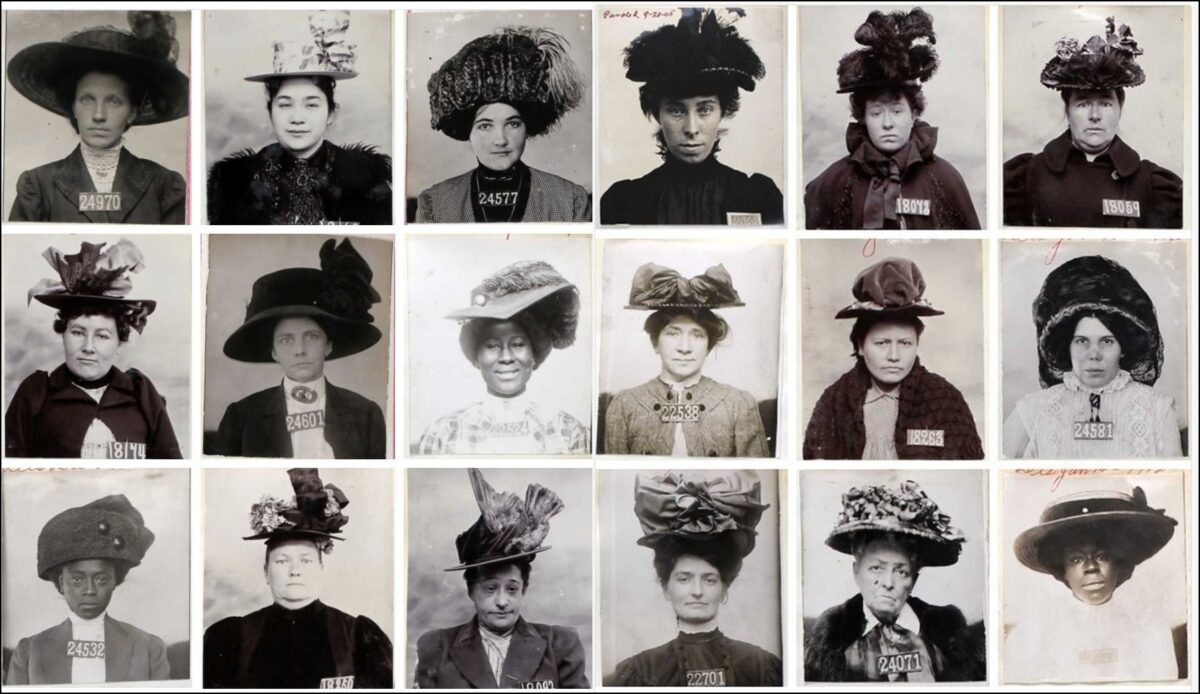
Brownstone Detectives investigates the history of our clients’ homes.
The story you are about to read was composed from research conducted in the course of one of those investigations.
Do you know the history of YOUR house?
********************************************************************************************************************************
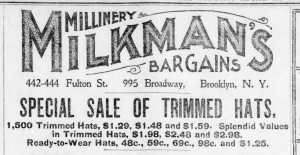
A cursory search through old newspaper archives of the 1890s and early 1900s will produce a large number of incidents whereby patrons of dry goods, and other such stores, were summarily and stealthily robbed by clandestine crooks.
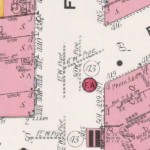
Solomon Milkman’s Millinery House – at 442 & 444 Fulton Street – was no exception.
A wholesale hat store primarily patronized by women, it soon became the target of thieves looking for money packaged in tiny, easily hidden and transportable containers – purses.

The first thieves, though, saw the store itself as the easy target. Usually women, they pilfered mostly feathers, buttons, and other accouterments for the embellishment of women’s hats.
In 1890, the first of Milkman’s thieves made the morning papers when a wealthy South Brooklyn woman was caught red-handed, so to speak, stealing goods valued at $3.
She would not give her name to the police, as her husband was well-known, so they referred to her as Jane Doe. The police kept her – and her husband’s – identities secret and allowed the wealthy businessman husband of hers to escape humiliation.
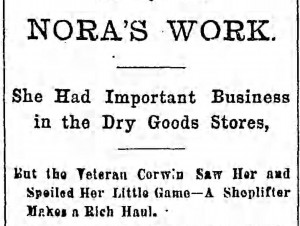
The following year, in 1891, Nora Duffy, 19, of 79 Sackett Street, was the next identified thief.
A “tawdrily dressed young woman,” she was noticed by a detective of Wechsler & Abraham’s department store, “acting in a manner that awakened all his old detective instincts.”
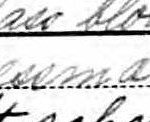
After Duffy left Milkman’s, the detective followed her and when the woman secreted herself in a doorway and pulled up her skirt to reveal in the folds “two or three bunches of gaudily colored feathers” with the price tags still attached, the detective arrested her.
At the Adams Street station, she was “ransacked” which produced a number of items from a variety of stores.
Duffy was a “dressmaker” herself and was likely stealing the accessories to supplement her income or to use in making dresses.
In February of 1891, another woman was arrested for a theft of ribbons from the millinery.
MILKMAN’S FAILS
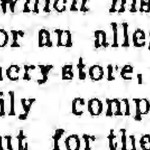
By February of 1894, due to the effects of the Panic of 1893, Milkman’s failed and its doors were forcibly closed. The Brooklyn Eagle noted that Milkman’s was “snowed under by pressing creditors and inability to collect outstanding accounts.”
A sheriff’s deputy was placed in charge of the store. The Eagle then commented on the latest Fulton firm to fail, noting that “the shades were drawn down and another store front on Fulton Street was darkened.”
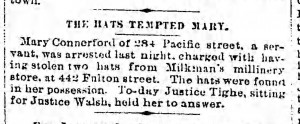
The following month, though, it seems that Milkman’s found a way to emerge from its debt without going into bankruptcy. For then, in March, it appeared that the thieves were again stealing goods from the millinery.
That year, a servant by the name of Mary Connerford, of 286 Pacific Street, was caught having stolen two hats from Milkman’s. The following morning, after Connerford had spent the night in jail, she was “held to answer” by Justice Tighe.
THIEVES BEGIN TO TARGET CUSTOMERS
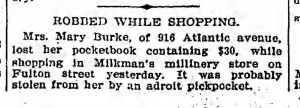
In 1896, a woman by the name of Mary Burke of 916 Atlantic Avenue had lost her pocketbook containing $30 while in Milkman’s. It was supposed, noted the Brooklyn Daily Eagle, that is was “probably stolen from her by an adroit pickpocket.”
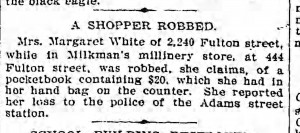
Also in 1896, a woman by the name of Margaret White claimed that she had been robbed of her purse containing $20, which “she had in her handbag on the counter.”
It began to appear to the store owners – and the police – that purse snatching had begun to replace common theft in stores throughout Brooklyn, as thieves began to realize the advantages of pilfering money as opposed to goods they would have to sell.
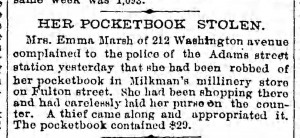
In October of 1896, a third reported purse thief struck Milkman’s, the second of which took the lady victim’s purse right up off of the counter. Mrs. Emma Marsh of 212 Washington Avenue noted that she had been shopping at Milkman’s when she had “carelessly laid her purse on the counter.” The Daily Eagle noted that a “thief came along and appropriated it.” The purse, Marsh stated, “contained $29.”
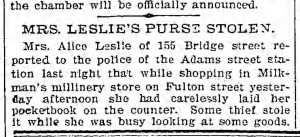
By 1897, a Miss Alice Leslie of nearby 155 Bridge Street, had had her purse stolen while in the store. Leslie had “carelessly laid her pocketbook on the counter,” though, which allowed the Brooklyn Eagle to summarily decide that she may have deserved what she had gotten for that thoughtlessness.
The papers are silent on Milkman’s thieves after this last account.
Finally in 1915, Milkman’s was put on the chopping block and the location was shut down. Solomon Milkman, who had started the reason for all of the purse snatchings, died 11 years later in 1926.
———————————————————————————————————————–
 Brownstone Detectives is an historic property research agency. Our mission is to document and save the histories of our clients’ homes. From our research, we produce our celebrated House History Books and House History Reports. Contact us today to begin discovering the history of your home.
Brownstone Detectives is an historic property research agency. Our mission is to document and save the histories of our clients’ homes. From our research, we produce our celebrated House History Books and House History Reports. Contact us today to begin discovering the history of your home.